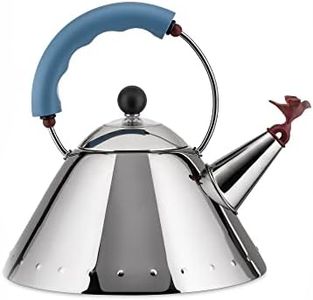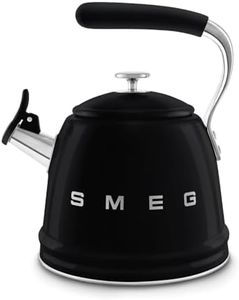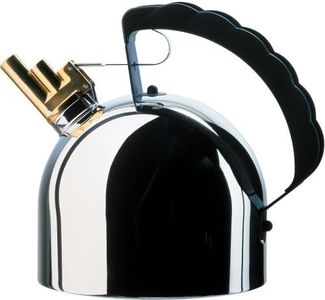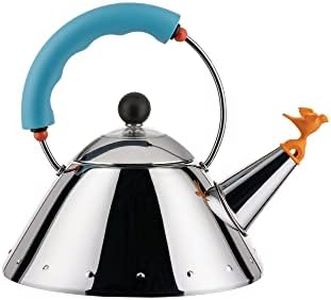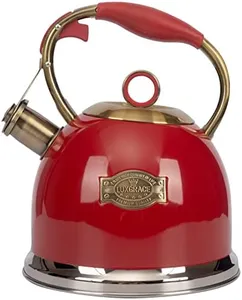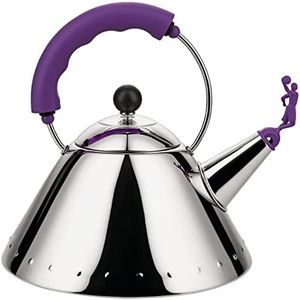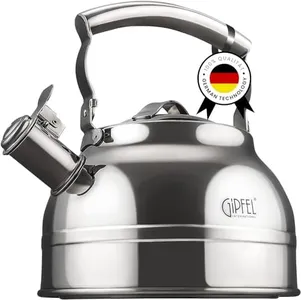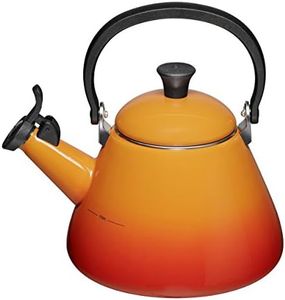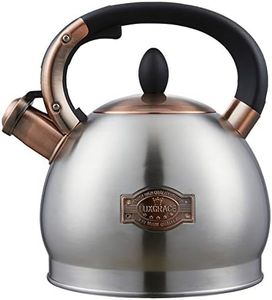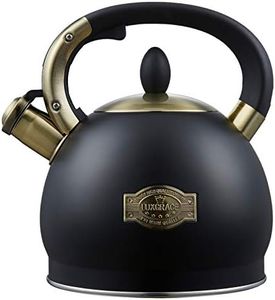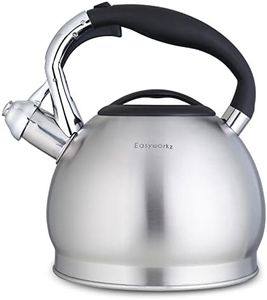We Use CookiesWe use cookies to enhance the security, performance,
functionality and for analytical and promotional activities. By continuing to browse this site you
are agreeing to our privacy policy
10 Best Stovetop Tea Kettles
From leading brands and best sellers available on the web.By clicking on a link to a third party's website, log data is shared with that third party.
Buying Guide for the Best Stovetop Tea Kettles
Choosing a stovetop tea kettle involves thinking about how you’ll use it, how much tea or hot water you usually need, and where you’ll want to use it. The right kettle can make boiling water safer, faster, and more enjoyable—whether you’re a casual tea drinker or enjoy brewing several cups a day. As you shop, focus on features that fit your habits and prioritize safety and ease of use.MaterialThe material of a stovetop kettle, usually stainless steel, glass, or enamel-coated metal, affects not just the kettle's appearance but also its durability, heat retention, and maintenance. Stainless steel kettles are tough, resist rust, and handle high heat well, making them a popular all-purpose choice. Glass kettles offer a modern look and let you monitor the water, though they may be more fragile. Enamel-coated kettles often add color and style to your kitchen, but they require a little more care to avoid chipping. Think about your kitchen style, how careful you are with kitchen tools, and whether easy cleaning or visual design matters most to you.
CapacityCapacity simply means how much water the kettle can hold, usually measured in liters or quarts. Small kettles (1 liter or less) are good for one or two people, boiling water quickly without taking up much space. Medium sizes (1 to 1.7 liters) are often the sweet spot for small families or frequent tea drinkers. Large kettles (over 2 liters) make sense if you're making several cups at once—like when entertaining guests or serving a household with many hot drinks. Think about how often you need to boil water for multiple cups or if you regularly prepare tea, instant coffee, or other hot drinks for groups.
Handle DesignA handle is more than just a way to hold the kettle—it matters for comfort and safety. Some handles stay cool to the touch, which is important to prevent burns, especially if you'll be pouring right after boiling. Consider if the handle shape feels comfortable in your grip and whether it's positioned away from the hot body of the kettle. If you have limited strength or dexterity in your hands, look for ergonomic handles that make gripping and pouring easier. Think about how important safe, easy pouring is for you, especially if you plan to use the kettle frequently.
Whistle FeatureMany stovetop kettles feature a whistle that alerts you when the water reaches a boil. This is a simple way to avoid accidentally boiling dry or wasting energy. Some whistles are louder than others, and some kettles let you flip open or remove the spout cover for silent boiling or easy pouring. Decide how much you value being alerted, and whether you prefer a loud whistle for busy environments or a quieter, subtler alert. If you’re forgetful or often multitask in the kitchen, a reliable whistle is especially helpful.
Compatibility with StovetopsNot all kettles work on every type of stove. For example, induction stovetops require kettles with magnetic bases. Most kettles work on gas or electric stoves, but you should always check compatibility. If you’re using an induction stove, double-check that the kettle is specifically marked as induction-safe. If you move between different kitchens or stoves, or travel with your kettle, versatility in compatibility can make a difference.
Ease of CleaningHow easy a kettle is to clean often depends on its material, construction, and the width of its opening. A wide opening makes it easier to reach inside and scrub, which is useful if you have hard water that causes scaling. Materials like stainless steel are generally simple to clean, while glass shows water stains but allows you to spot residue quickly. If you want a kettle that stays looking good with minimal fuss, look for wide mouths and smooth surfaces inside.
